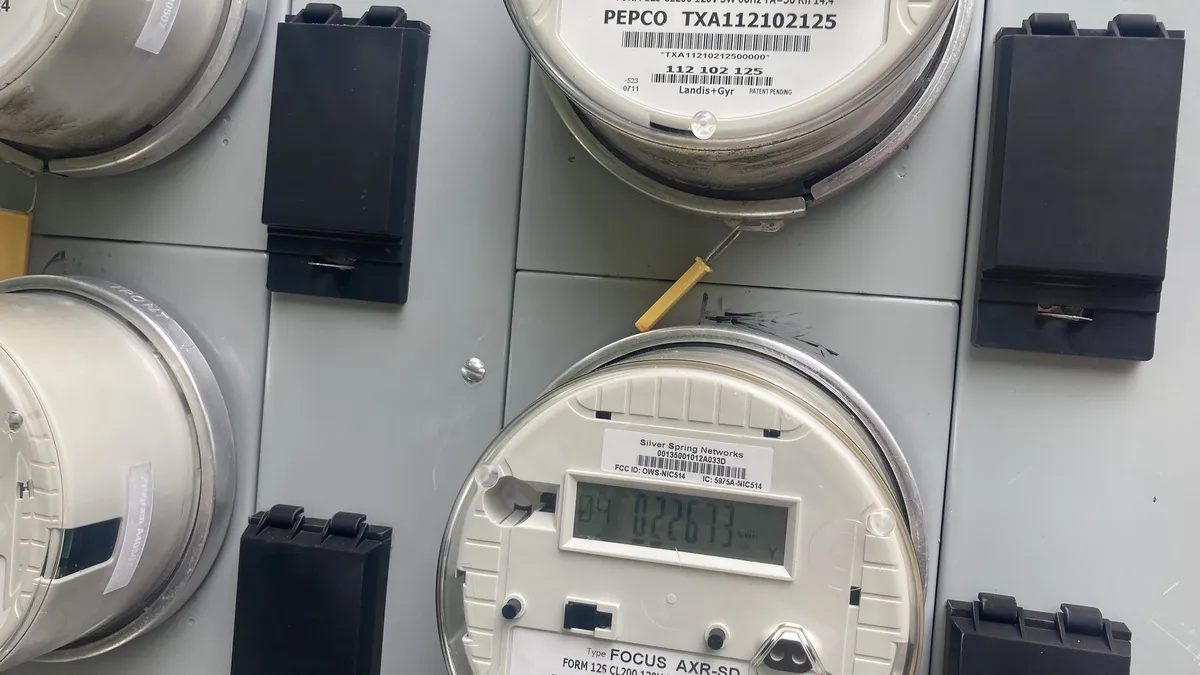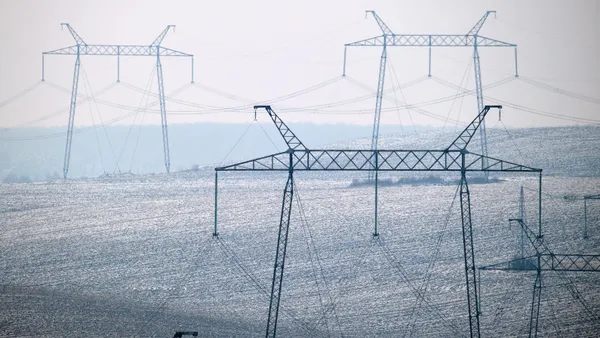Dive Brief:
-
Exelon utilities — Baltimore Gas and Electric, Delmarva Power & Light and Potomac Electric Power Co. — are urging the Maryland Public Service Commission to continue allowing multi-year rate plans, or MRPs, which they say provide consumer benefits and enable state energy policy, according to Monday filings at the agency.
-
However, PSC staff said it is unclear whether the MRP format is any better than traditional ratemaking at meeting state goals and that it shifts risks from utilities to ratepayers. The commission should consider revising its MRP framework, staff said.
-
The Maryland Office of People’s Counsel, which represents residential utility customers, and the Apartment and Office Building Association of Metropolitan Washington told the PSC that MRPs should be scrapped. The PSC plans to hold hearings on the issue starting on Oct. 15, with briefs due Dec. 13.
Dive Insight:
The Maryland PSC in 2020 adopted a framework for an MRP pilot program and later that year approved a multi-year rate proposal for BGE. Similar rate plans were later approved for Pepco and Delmarva Power.
Compared to conventional rate cases that are based on past spending, the MRPs enable utilities to recoup expected future spending, with true-ups to match actual expenditures.
When the PSC approved the MRP process, it said a multi-year rate plan provides more predictable rates for customers and more predictable revenue for utilities, spreads forecasted rate changes over multiple years and decreases the administrative burden on rate case participants.
Since then, the PSC in December approved a second three-year rate plan for BGE, but said it wanted to review the multi-year process in a “lessons learned” proceeding. In June, the commission rejected a multi-year rate plan proposed by Pepco.
The PSC started its review of the MRP framework in August by seeking comments from stakeholders.
Utilities support MRPs
In separate filings, BGE and Pepco and Delmarva Power said the multi-year rate framework should continue, possibly with changes.
The three utilities said their MRPs met the PSC’s goals when it established the rate process, including helping meet state energy policies such as electrification, decarbonization and grid transformation.
“The pilot MRP also set rates that allowed [BGE] to execute the workplans needed to continue executing its primary responsibility — providing safe and reliable service — while enabling BGE to navigate unprecedented challenges, including the pandemic, global supply chain shortages, and unprecedented levels of inflation,” the Baltimore-based utility said.
By focusing on long-term resource planning, multi-year plans can ensure that utilities have the resources to meet future demand and maintain reliability, especially since several power plants in Maryland are retiring and load is growing, BGE said.
With variations, forward-looking, multi-year rate plans are used by the “most climate-forward” states, including California, New York, Massachusetts, Hawai’i, Washington and the District of Columbia, Pepco and Delmarva Power said.
“The flexibility in frameworks allows the multi-year framework to evolve with changing prioritization and lessons learned in implementation,” the utilities said, noting they were open to changes in Maryland’s framework, including ensuring utilities have incentives to control their costs.
Risks shifted to ratepayers, PSC staff says
Commission staff warned the MRP process may reduce oversight of utility spending. “By approving the levels and types of spending during the MRP rate-effective period and approving rates for this revenue requirement, the MRP process may reduce the scope of any future prudency review to the consideration of whether the utility company has diligently and prudently carried out its spending plans,” staff said.
The MRPs are based on plans that can change, but utilities provide few details on the changes, according to staff. “The asymmetry of information influences the ability and timing required to gain a complete understanding of the utility’s spending decisions,” staff said.
Also, the multi-year plans have shifted risks onto ratepayers, according to staff.
“This is achieved by the utility putting in significant spend proposals knowing that some may be disallowed, but the utility suffers no negative repercussions because none of the spend has been made,” staff said.
In “historical test year” rate cases, based on past spending, utilities will inherently be more conservative with their spending because if it is disallowed they will not recover their costs, staff said.
MRPs haven’t delivered their intended benefits and seem to unfairly shift risks to ratepayers, the Maryland Energy Administration told the PSC. If the PSC decides to keep MRPs it should cap how far utilities can deviate from their spending plans and require them to provide more data and analysis for prudency reviews, the agency said.
Ratepayer advocate, trade group call for ending process
The PSC should abandon the multi-year rate concept, according to the state’s ratepayer advocate and a building trade group.
The MRPs have led to record high utility distribution rates driven by the lack of cost containment mechanisms in the rate plans, the OPC said.
“The very design of the MRP — basing rates on utility-proposed budgets of a forecasted three-year plan — incentivizes utilities to ‘shoot for the moon’ and pursue a greater number of capital investments than what would have been pursued under standard ratemaking,” the OPC said.
The OPC called for reverting to standard ratemaking where “utilities — rather than customers — bear risks from imprudent and excessive capital investment, inaccurate cost forecasting, and poor operations management.”
The Apartment and Office Building Association of Metropolitan Washington echoed the OPC’s concerns.
The experience with multi-year rates in Maryland and the District of Columbia shows utilities cannot accurately forecast their future costs, according to the trade group.
“In the absence of detailed, costly and time consuming reviews of the prudence of actual utility expenditures, there can be no confidence that necessary ratepayer protections from wasteful or unnecessary utility expenditures are maintained,” the group said.














